牛津深圳版七年级上册Module 3 Travels Unit 课时2阅读课件(共31张PPT)
文档属性
| 名称 | 牛津深圳版七年级上册Module 3 Travels Unit 课时2阅读课件(共31张PPT) | 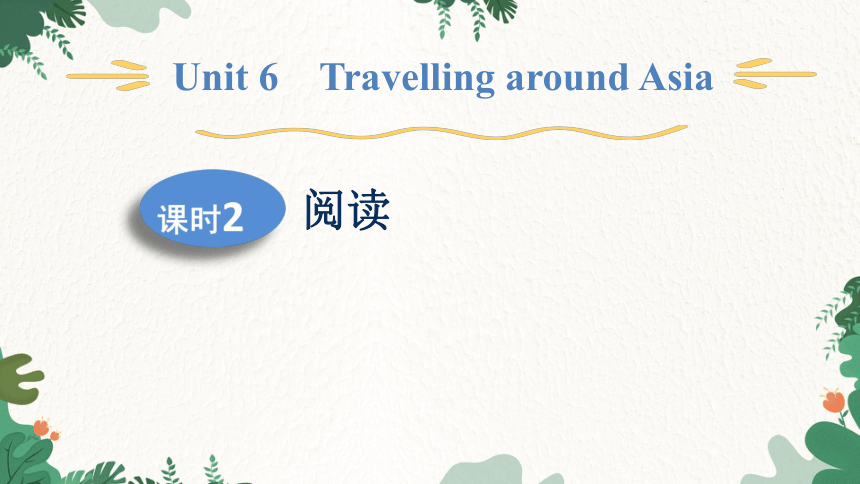 | |
| 格式 | pptx | ||
| 文件大小 | 2.5MB | ||
| 资源类型 | 教案 | ||
| 版本资源 | 牛津深圳版 | ||
| 科目 | 英语 | ||
| 更新时间 | 2023-08-21 08:33:27 | ||
图片预览

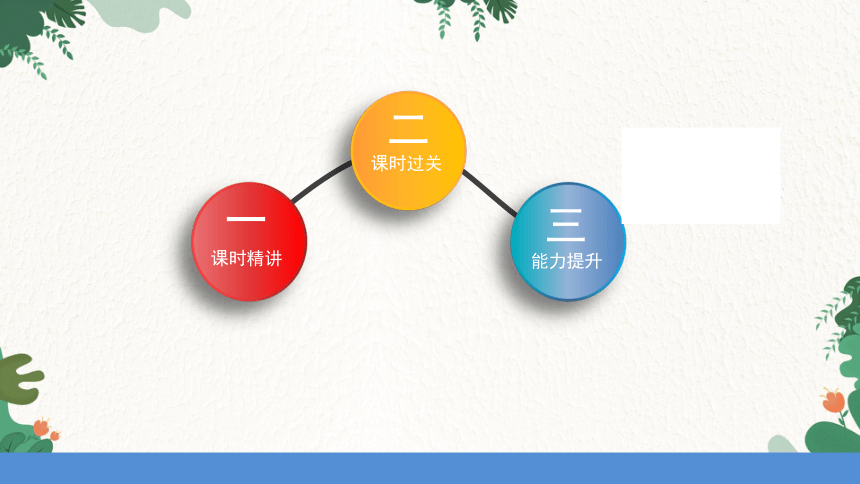
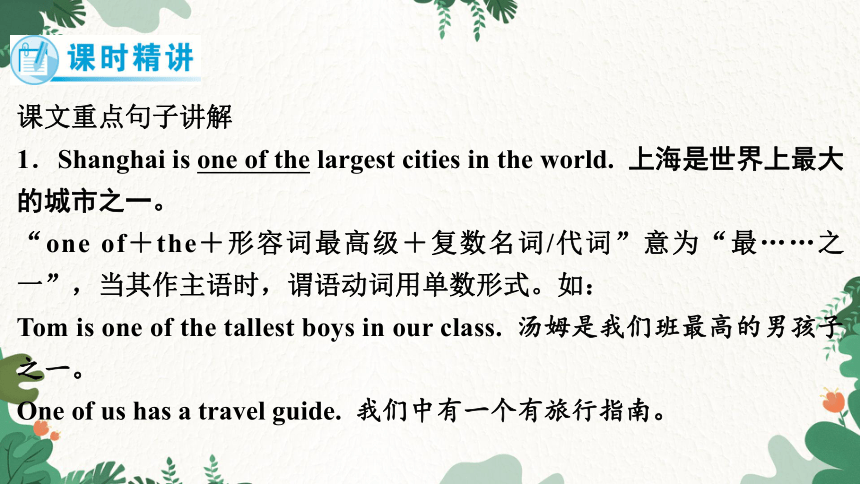
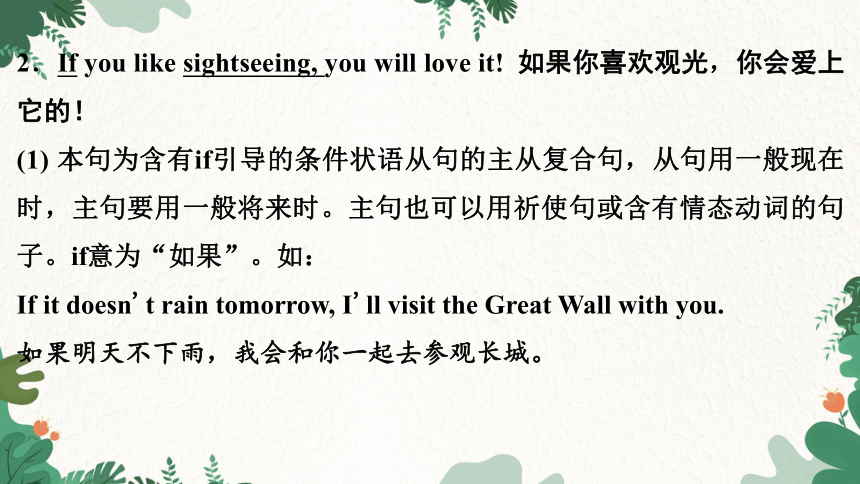
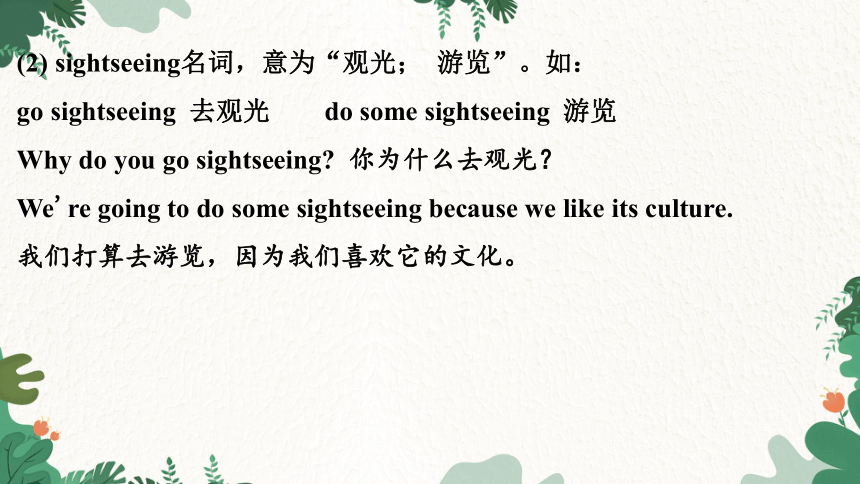
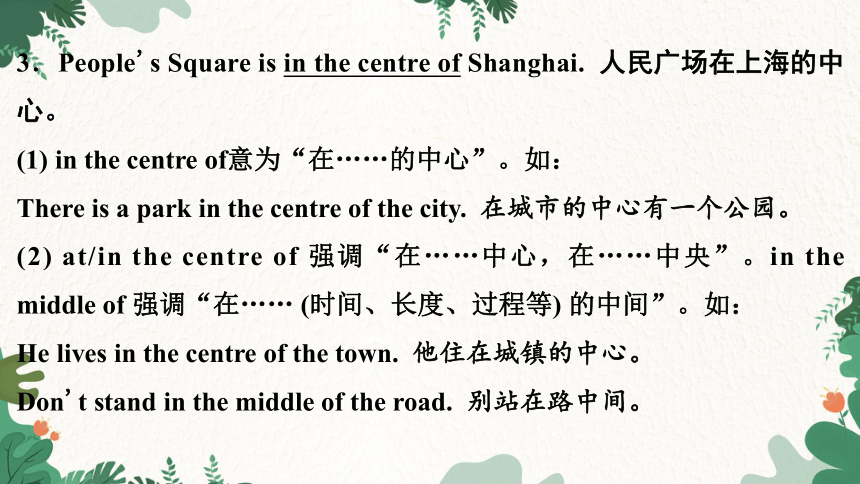
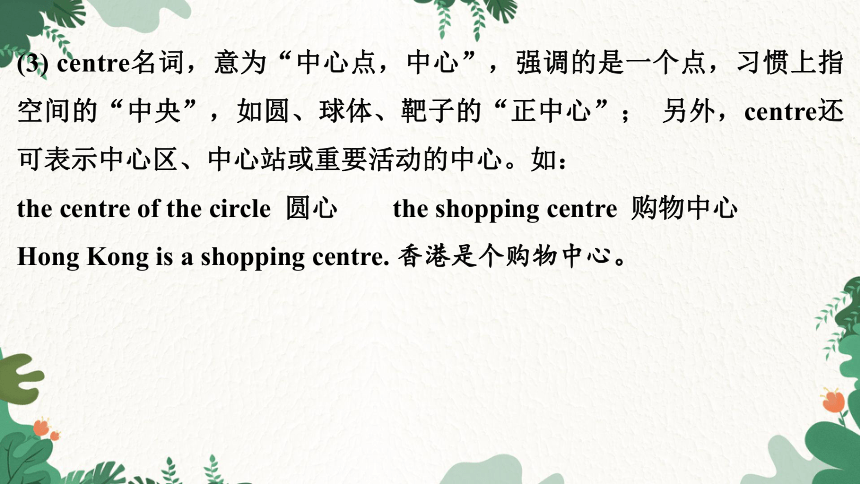
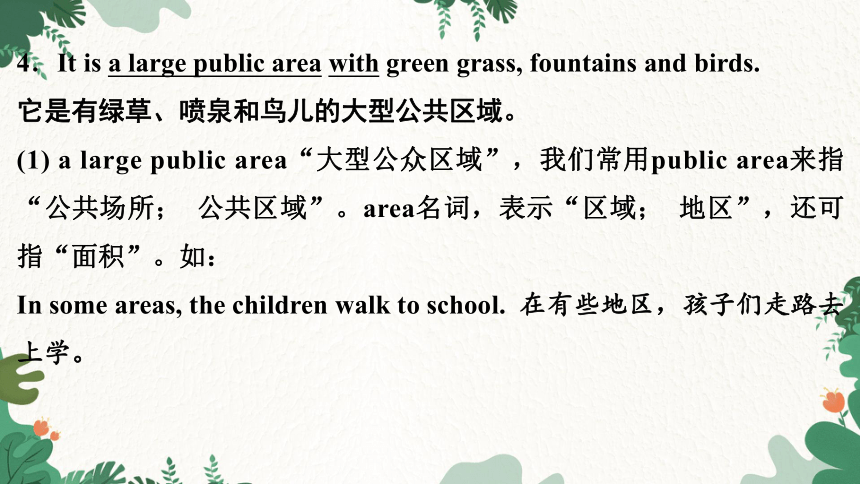
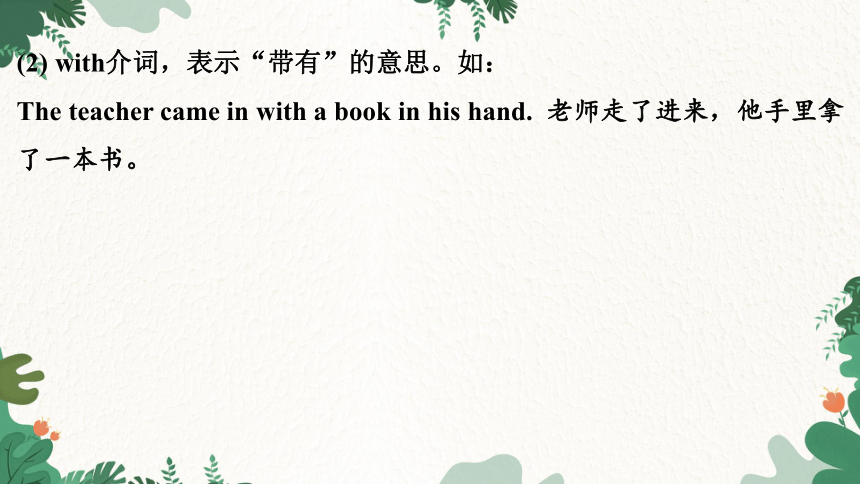

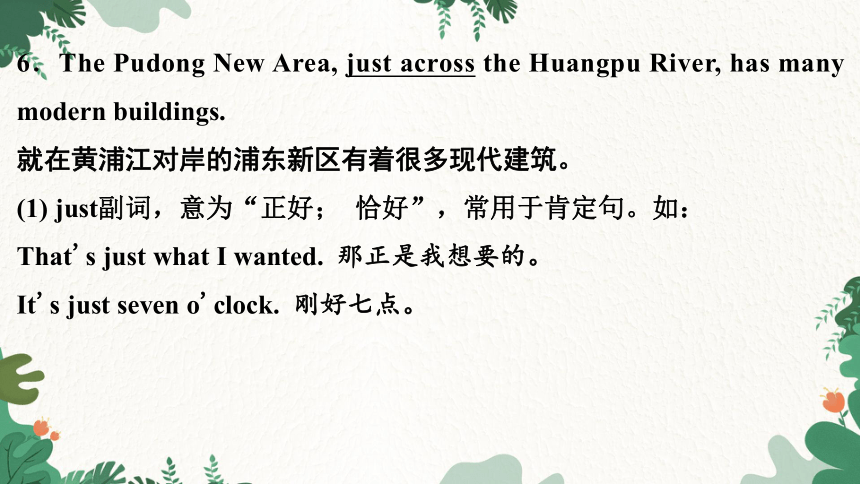
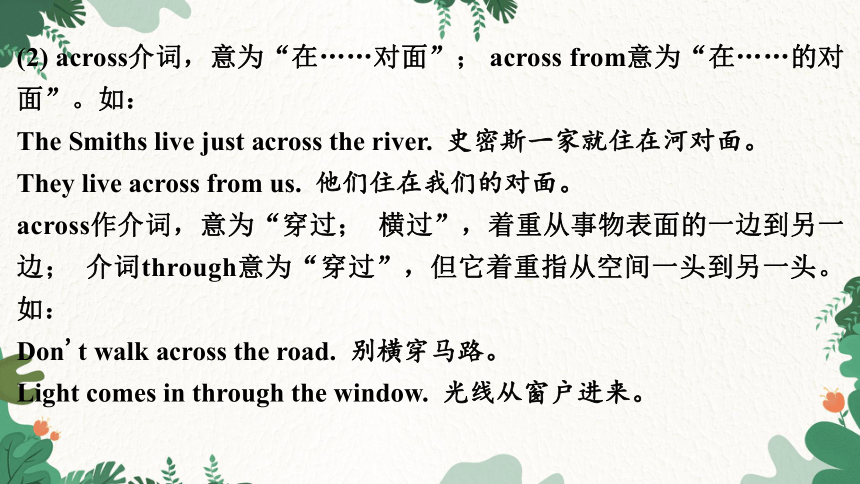
文档简介
(共31张PPT)
Unit 6 Travelling around Asia
课时2
阅读
一
课时精讲
二
课时过关
三
能力提升
课文重点句子讲解
1.Shanghai is one of the largest cities in the world. 上海是世界上最大的城市之一。
“one of+the+形容词最高级+复数名词/代词”意为“最……之一”,当其作主语时,谓语动词用单数形式。如:
Tom is one of the tallest boys in our class. 汤姆是我们班最高的男孩子之一。
One of us has a travel guide. 我们中有一个有旅行指南。
2.If you like sightseeing, you will love it! 如果你喜欢观光,你会爱上它的!
(1) 本句为含有if引导的条件状语从句的主从复合句,从句用一般现在时,主句要用一般将来时。主句也可以用祈使句或含有情态动词的句子。if意为“如果”。如:
If it doesn't rain tomorrow, I'll visit the Great Wall with you.
如果明天不下雨,我会和你一起去参观长城。
(2) sightseeing名词,意为“观光; 游览”。如:
go sightseeing 去观光 do some sightseeing 游览
Why do you go sightseeing 你为什么去观光?
We're going to do some sightseeing because we like its culture.
我们打算去游览,因为我们喜欢它的文化。
3.People's Square is in the centre of Shanghai. 人民广场在上海的中心。
(1) in the centre of意为“在……的中心”。如:
There is a park in the centre of the city. 在城市的中心有一个公园。
(2) at/in the centre of 强调“在……中心,在……中央”。in the middle of 强调“在…… (时间、长度、过程等) 的中间”。如:
He lives in the centre of the town. 他住在城镇的中心。
Don't stand in the middle of the road. 别站在路中间。
(3) centre名词,意为“中心点,中心”,强调的是一个点,习惯上指空间的“中央”,如圆、球体、靶子的“正中心”; 另外,centre还可表示中心区、中心站或重要活动的中心。如:
the centre of the circle 圆心 the shopping centre 购物中心
Hong Kong is a shopping centre. 香港是个购物中心。
4.It is a large public area with green grass, fountains and birds.
它是有绿草、喷泉和鸟儿的大型公共区域。
(1) a large public area“大型公众区域”,我们常用public area来指“公共场所; 公共区域”。area名词,表示“区域; 地区”,还可指“面积”。如:
In some areas, the children walk to school. 在有些地区,孩子们走路去上学。
(2) with介词,表示“带有”的意思。如:
The teacher came in with a book in his hand. 老师走了进来,他手里拿了一本书。
5.If you walk along the Bund, you will see many old buildings.
如果你沿着外滩漫步,你将看到很多古老的建筑。
walk along意为“沿着……走”。如:
When we walked along the beach, we saw a whale. 当我们沿着海滩走时,我们看见了一头鲸鱼。
Walk along this road, and take the second turning on the right. 沿着这条路走,第二个拐角处向右拐。
6.The Pudong New Area, just across the Huangpu River, has many modern buildings.
就在黄浦江对岸的浦东新区有着很多现代建筑。
(1) just副词,意为“正好; 恰好”,常用于肯定句。如:
That's just what I wanted. 那正是我想要的。
It's just seven o'clock. 刚好七点。
(2) across介词,意为“在……对面”; across from意为“在……的对面”。如:
The Smiths live just across the river. 史密斯一家就住在河对面。
They live across from us. 他们住在我们的对面。
across作介词,意为“穿过; 横过”,着重从事物表面的一边到另一边; 介词through意为“穿过”,但它着重指从空间一头到另一头。如:
Don't walk across the road. 别横穿马路。
Light comes in through the window. 光线从窗户进来。
7.At night, these tall buildings light up the sky in every direction.
晚上,这些高楼照亮了四面八方的天空。
(1) at night意为“夜晚; 在夜里”。
(2) light up意为“点亮; 照亮”。如:
Fire lights up the room. 火照亮了房间。
It's time to light up the candle. 是点燃蜡烛的时候了。
(3) light动词,意为“照亮; 使明亮”,过去式为lighted/lit。light名词,意为“光; 光线”。如:
Light travels faster than sound. 光的传播速度比声音快。
light形容词,意为“轻的; 浅色的; 明亮的”。如:
light music 轻音乐 light green 浅绿色
a light classroom 明亮的教室
注意:表示“朝……方向”,用介词in,而不用to。 in all directions = in every direction 四面八方
(4) direction可数名词,意为“方向”。如:
Sound comes in all directions. 声音来自四面八方。
He looks at the room in every direction. 他看看房子四周。
8.If you enjoy history and natural beauty, you will love this garden.
如要你喜爱历史和自然美,你会爱上这个花园。
(1) natural形容词,意为“自然的; 天然的”; 名词nature,意为“自然; 自然界”。
(2) beauty名词, 意为“美人; 美的东西; 美丽”; 形容词beautiful, 意为“美的; 优美的”。如:
We all like natural beauty. 我们都喜欢自然美。
Nature is the most beautiful in spring. 在春天,大自然是最美丽的。
natural gas 天然气 natural science 自然科学
natural beauty 自然美 beauty shop 美容院
9.You can also buy different snacks just outside the garden.
你也能在花园外买到不同的小吃。
outside介词,意为“在……外面”,反义词为inside。
相关短语:at the outside 至多,充其量
outside and in 里里外外 outside in 从外到内
Please wait outside the school gate. 请在学校大门外等。
一、课文语法填空。
Shanghai is in the 1.__________ (east) part of China. It is one of the 2._________ (large) cities in the world. If you like sightseeing, you will love it.
People's Square is in the centre of Shanghai. It is a large public area 3.______ green grass, fountains and birds. If you visit People's Square, you can also see famous buildings around it, such as the Shanghai Grand Theatre 4.______ the Shanghai Museum.
eastern
largest
with
and
The Bund is where old Shanghai meets new Shanghai. If you walk along the Bund, you will see many old buildings. The Pudong New Area, just 5.____________ (cross) the Huangpu River, has many modern buildings. At night, these tall buildings light up the sky in all 6.____________ (direction).
across
directions
Yu Garden is a 7._____________ (tradition) garden. If you enjoy history and 8.__________ (nature) beauty, you will love this garden. There are many beautiful buildings, bridges and ponds. You can also buy different snacks just outside the garden.
Shanghai has something 9.__________ everyone. It's nice 10.___________ (visit) Shanghai this year.
traditional
natural
for
to visit
二、完成句子,每空一词。
1.目前在中国你游览过多少处名胜古迹了?
How many _________ _____ ___________ have you visited in China so far
2.春节,广州市中心很多的商店都关门。
A lot of shops ______ _____ _________ ______ Guangzhou are closed during the Spring Festival.
places of interest
in the centre of
3.乌鲁木齐在中国的西北部。它是一个美丽的地方。
Urumqi is______ ______ ____________ ____ China. It is a beautiful place.
4.当我们在黑暗的房间里打开电灯时,房间里的一切都会立即亮起来。
When we turn on a lamp in a dark room, everything in the room _______ ________ ____ at once.
in the northwest of
will light up
5.做个旅游手册,向你的朋友们介绍些有趣的地方吧!
Make a __________ ___________ to introduce some interesting places to your friends!
6.如果我有足够的钱,我打算去周游世界。
If I have enough money, I am going to _________ _________ ______ _______.
7.蒂娜如果通过了测试,她就会去欧洲。
Dina will go to Europe _____ ______ _________ the exams.
travel guide
travel around the
world
if she passes
8.— 露西,昨晚过得怎样? —— 玩得很开心。
— Lucy, how were you last night?
— Well, I ______ ___ ____________ _______.
9.请沿着这条路一直走下去,你会发现图书馆在你的右手边。
Please ______ ________ this road and you will find the library on your right.
10.当我走上舞台时,四面八方的灯射向我。
When I went onto the stage, all lights _____ ________ ___________ shot at me.
had a wonderful time
walk along
in every direction
阅读理解。
When visitors get off the plane and come to Singapore's Central Area, they will be surprised, because the city is so clean. There are bright glass buildings, green trees, grass and flowers of all colours in the city. People also call it the “Garden City”. Singapore River is an important river in Singapore. It was dirty in the past, but now it is very clean after a ten-year river cleaning plan.
Nowadays people can walk along the river
or take a short trip on a ship to enjoy
themselves in the river.
The river runs down to the harbour (港口). There visitors can see the well-known white Merlion (鱼尾狮) statue with water coming out from its mouth. With the head of a lion and the body of a fish, it is famous as Singapore's mascot (吉祥物). When the night comes, the tall buildings around the Merlion begin to light it up in every direction. There are many clubs, restaurants and hotels in Singapore and many people come there to enjoy themselves. When you are outside at night in Singapore, there is no need to be afraid. Singapore is one of the safest countries in the world.
( ) 1.Why are visitors surprised when they get to Singapore's Central Area
A.Because the people there are friendly.
B.Because it is very clean.
C.Because it is very modern.
D.Because there are many glass buildings.
B
( ) 2.How is the Singapore River now
A.Dirty. B.Dry.
C.Clean. D.Deep.
( ) 3.What colour is the Merlion statue
A.Red. B.Green.
C.Black. D.White.
C
D
( ) 4.What can we know from the passage
A.Visitors can see the Merlion at the beginning of Singapore River.
B.People may be afraid if they go outside at late night in Singapore.
C.People can have a good time in Singapore River when taking a trip by ship.
D.There are few plants in Singapore.
C
( ) 5.Where can you probably read this passage
A.In a travel guide.
B.In a storybook.
C.In a health magazine.
D.In a cookbook.
A
谢谢大家!
Unit 6 Travelling around Asia
课时2
阅读
一
课时精讲
二
课时过关
三
能力提升
课文重点句子讲解
1.Shanghai is one of the largest cities in the world. 上海是世界上最大的城市之一。
“one of+the+形容词最高级+复数名词/代词”意为“最……之一”,当其作主语时,谓语动词用单数形式。如:
Tom is one of the tallest boys in our class. 汤姆是我们班最高的男孩子之一。
One of us has a travel guide. 我们中有一个有旅行指南。
2.If you like sightseeing, you will love it! 如果你喜欢观光,你会爱上它的!
(1) 本句为含有if引导的条件状语从句的主从复合句,从句用一般现在时,主句要用一般将来时。主句也可以用祈使句或含有情态动词的句子。if意为“如果”。如:
If it doesn't rain tomorrow, I'll visit the Great Wall with you.
如果明天不下雨,我会和你一起去参观长城。
(2) sightseeing名词,意为“观光; 游览”。如:
go sightseeing 去观光 do some sightseeing 游览
Why do you go sightseeing 你为什么去观光?
We're going to do some sightseeing because we like its culture.
我们打算去游览,因为我们喜欢它的文化。
3.People's Square is in the centre of Shanghai. 人民广场在上海的中心。
(1) in the centre of意为“在……的中心”。如:
There is a park in the centre of the city. 在城市的中心有一个公园。
(2) at/in the centre of 强调“在……中心,在……中央”。in the middle of 强调“在…… (时间、长度、过程等) 的中间”。如:
He lives in the centre of the town. 他住在城镇的中心。
Don't stand in the middle of the road. 别站在路中间。
(3) centre名词,意为“中心点,中心”,强调的是一个点,习惯上指空间的“中央”,如圆、球体、靶子的“正中心”; 另外,centre还可表示中心区、中心站或重要活动的中心。如:
the centre of the circle 圆心 the shopping centre 购物中心
Hong Kong is a shopping centre. 香港是个购物中心。
4.It is a large public area with green grass, fountains and birds.
它是有绿草、喷泉和鸟儿的大型公共区域。
(1) a large public area“大型公众区域”,我们常用public area来指“公共场所; 公共区域”。area名词,表示“区域; 地区”,还可指“面积”。如:
In some areas, the children walk to school. 在有些地区,孩子们走路去上学。
(2) with介词,表示“带有”的意思。如:
The teacher came in with a book in his hand. 老师走了进来,他手里拿了一本书。
5.If you walk along the Bund, you will see many old buildings.
如果你沿着外滩漫步,你将看到很多古老的建筑。
walk along意为“沿着……走”。如:
When we walked along the beach, we saw a whale. 当我们沿着海滩走时,我们看见了一头鲸鱼。
Walk along this road, and take the second turning on the right. 沿着这条路走,第二个拐角处向右拐。
6.The Pudong New Area, just across the Huangpu River, has many modern buildings.
就在黄浦江对岸的浦东新区有着很多现代建筑。
(1) just副词,意为“正好; 恰好”,常用于肯定句。如:
That's just what I wanted. 那正是我想要的。
It's just seven o'clock. 刚好七点。
(2) across介词,意为“在……对面”; across from意为“在……的对面”。如:
The Smiths live just across the river. 史密斯一家就住在河对面。
They live across from us. 他们住在我们的对面。
across作介词,意为“穿过; 横过”,着重从事物表面的一边到另一边; 介词through意为“穿过”,但它着重指从空间一头到另一头。如:
Don't walk across the road. 别横穿马路。
Light comes in through the window. 光线从窗户进来。
7.At night, these tall buildings light up the sky in every direction.
晚上,这些高楼照亮了四面八方的天空。
(1) at night意为“夜晚; 在夜里”。
(2) light up意为“点亮; 照亮”。如:
Fire lights up the room. 火照亮了房间。
It's time to light up the candle. 是点燃蜡烛的时候了。
(3) light动词,意为“照亮; 使明亮”,过去式为lighted/lit。light名词,意为“光; 光线”。如:
Light travels faster than sound. 光的传播速度比声音快。
light形容词,意为“轻的; 浅色的; 明亮的”。如:
light music 轻音乐 light green 浅绿色
a light classroom 明亮的教室
注意:表示“朝……方向”,用介词in,而不用to。 in all directions = in every direction 四面八方
(4) direction可数名词,意为“方向”。如:
Sound comes in all directions. 声音来自四面八方。
He looks at the room in every direction. 他看看房子四周。
8.If you enjoy history and natural beauty, you will love this garden.
如要你喜爱历史和自然美,你会爱上这个花园。
(1) natural形容词,意为“自然的; 天然的”; 名词nature,意为“自然; 自然界”。
(2) beauty名词, 意为“美人; 美的东西; 美丽”; 形容词beautiful, 意为“美的; 优美的”。如:
We all like natural beauty. 我们都喜欢自然美。
Nature is the most beautiful in spring. 在春天,大自然是最美丽的。
natural gas 天然气 natural science 自然科学
natural beauty 自然美 beauty shop 美容院
9.You can also buy different snacks just outside the garden.
你也能在花园外买到不同的小吃。
outside介词,意为“在……外面”,反义词为inside。
相关短语:at the outside 至多,充其量
outside and in 里里外外 outside in 从外到内
Please wait outside the school gate. 请在学校大门外等。
一、课文语法填空。
Shanghai is in the 1.__________ (east) part of China. It is one of the 2._________ (large) cities in the world. If you like sightseeing, you will love it.
People's Square is in the centre of Shanghai. It is a large public area 3.______ green grass, fountains and birds. If you visit People's Square, you can also see famous buildings around it, such as the Shanghai Grand Theatre 4.______ the Shanghai Museum.
eastern
largest
with
and
The Bund is where old Shanghai meets new Shanghai. If you walk along the Bund, you will see many old buildings. The Pudong New Area, just 5.____________ (cross) the Huangpu River, has many modern buildings. At night, these tall buildings light up the sky in all 6.____________ (direction).
across
directions
Yu Garden is a 7._____________ (tradition) garden. If you enjoy history and 8.__________ (nature) beauty, you will love this garden. There are many beautiful buildings, bridges and ponds. You can also buy different snacks just outside the garden.
Shanghai has something 9.__________ everyone. It's nice 10.___________ (visit) Shanghai this year.
traditional
natural
for
to visit
二、完成句子,每空一词。
1.目前在中国你游览过多少处名胜古迹了?
How many _________ _____ ___________ have you visited in China so far
2.春节,广州市中心很多的商店都关门。
A lot of shops ______ _____ _________ ______ Guangzhou are closed during the Spring Festival.
places of interest
in the centre of
3.乌鲁木齐在中国的西北部。它是一个美丽的地方。
Urumqi is______ ______ ____________ ____ China. It is a beautiful place.
4.当我们在黑暗的房间里打开电灯时,房间里的一切都会立即亮起来。
When we turn on a lamp in a dark room, everything in the room _______ ________ ____ at once.
in the northwest of
will light up
5.做个旅游手册,向你的朋友们介绍些有趣的地方吧!
Make a __________ ___________ to introduce some interesting places to your friends!
6.如果我有足够的钱,我打算去周游世界。
If I have enough money, I am going to _________ _________ ______ _______.
7.蒂娜如果通过了测试,她就会去欧洲。
Dina will go to Europe _____ ______ _________ the exams.
travel guide
travel around the
world
if she passes
8.— 露西,昨晚过得怎样? —— 玩得很开心。
— Lucy, how were you last night?
— Well, I ______ ___ ____________ _______.
9.请沿着这条路一直走下去,你会发现图书馆在你的右手边。
Please ______ ________ this road and you will find the library on your right.
10.当我走上舞台时,四面八方的灯射向我。
When I went onto the stage, all lights _____ ________ ___________ shot at me.
had a wonderful time
walk along
in every direction
阅读理解。
When visitors get off the plane and come to Singapore's Central Area, they will be surprised, because the city is so clean. There are bright glass buildings, green trees, grass and flowers of all colours in the city. People also call it the “Garden City”. Singapore River is an important river in Singapore. It was dirty in the past, but now it is very clean after a ten-year river cleaning plan.
Nowadays people can walk along the river
or take a short trip on a ship to enjoy
themselves in the river.
The river runs down to the harbour (港口). There visitors can see the well-known white Merlion (鱼尾狮) statue with water coming out from its mouth. With the head of a lion and the body of a fish, it is famous as Singapore's mascot (吉祥物). When the night comes, the tall buildings around the Merlion begin to light it up in every direction. There are many clubs, restaurants and hotels in Singapore and many people come there to enjoy themselves. When you are outside at night in Singapore, there is no need to be afraid. Singapore is one of the safest countries in the world.
( ) 1.Why are visitors surprised when they get to Singapore's Central Area
A.Because the people there are friendly.
B.Because it is very clean.
C.Because it is very modern.
D.Because there are many glass buildings.
B
( ) 2.How is the Singapore River now
A.Dirty. B.Dry.
C.Clean. D.Deep.
( ) 3.What colour is the Merlion statue
A.Red. B.Green.
C.Black. D.White.
C
D
( ) 4.What can we know from the passage
A.Visitors can see the Merlion at the beginning of Singapore River.
B.People may be afraid if they go outside at late night in Singapore.
C.People can have a good time in Singapore River when taking a trip by ship.
D.There are few plants in Singapore.
C
( ) 5.Where can you probably read this passage
A.In a travel guide.
B.In a storybook.
C.In a health magazine.
D.In a cookbook.
A
谢谢大家!
